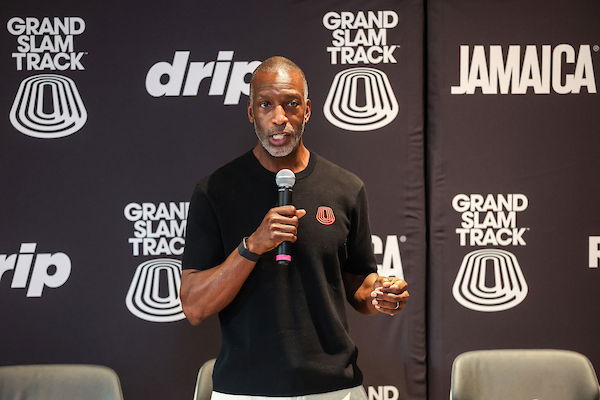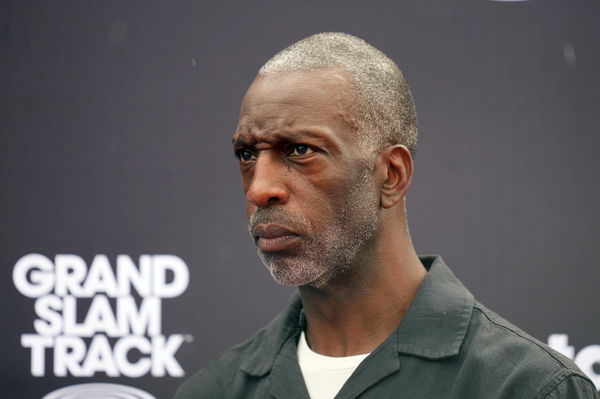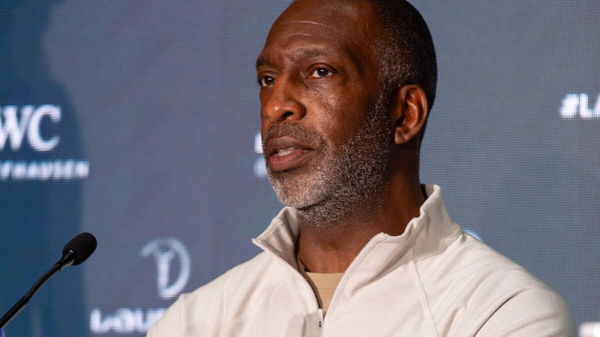
Imago
Credit: Imago

Imago
Credit: Imago
“We feel that we’ve proven everything that we needed to this year in the first three slams, and so we will go ahead now and conclude our season and focus on the 2026 season.” That’s what Michael Johnson said on June 12 when he suddenly announced the end of the very first Grand Slam Track season. The catch? There was still one meet left — the grand finale in Los Angeles — where fans were supposed to find out who the season’s champions were. But just like that, with no warning, no drama, and no final lap, it was over. All it took was Johnson’s statement — and that’s when the real story started.
Watch What’s Trending Now!
People started asking the obvious question: What caused the collapse of Grand Slam Track? Michael Johnson, the league’s president, was quick to brush off any talk of financial trouble being the reason. But the signs were everywhere. GST had promised big things: a massive $12.6 million in prize money, up to $100,000 per meet, and appearance fees around $200,000 for top athletes. Ambitious? Definitely. But the reality? A lot messier. Right now, the league reportedly owes athletes at least $13 million — and that’s not even counting what’s still owed to vendors. One venue alone says GST missed multiple payment deadlines. So yeah, things weren’t adding up. And eventually, Johnson couldn’t stay silent anymore. He’s finally spoken out — and here’s what he had to say.
On July 24, Michael Johnson sat down with Front Office Sports Today, and naturally, the topic of Grand Slam Track came up. So what caused all the financial chaos? Johnson laid it out: “It was widely reported that we raised 30 million, or we had 30 million in commitments, which we did. But we didn’t receive all of that because, as I said, one of our investors was unable to honor their full commitment. So we had, you know, we raised a significant amount of money. It cost a lot of money to do what we did this year.” In short, they had big plans, but one major investor pulling out threw everything off.
ADVERTISEMENT
Still, Johnson stood by the league’s mission. He said GST delivered on its promises to the sport and is still committed to making good on what it owes the athletes. The problem wasn’t the vision; it was that pesky missing chunk of funding that left the whole thing shaky.

Imago
Track & Field: Grand Slam Track Miami May 4, 2025 Miramar, FL, USA Michael Johnson reacts during the Grand Slam Track Miami at Ansin Sports Complex. Miramar Ansin Sports Complex, Florida, United States, EDITORIAL USE ONLY PUBLICATIONxINxGERxSUIxAUTxONLY Copyright: xKirbyxLeex 20250504_hlf_al2_126
Even with everything that went wrong, Michael Johnson still found a reason to hold his head high. “It’s been a very difficult situation for us,” he said. “I’m very proud of what our team was able to accomplish and all of the folks that worked on this and our athletes as well.” And honestly, he’s not wrong to see some bright spots. Grand Slam Track managed to grab serious attention. Johnson mentioned that new sponsors and investors have either come on board or are showing strong interest. Plus, the Philly stop was a win — it brought in a big crowd, proving that the league could draw fans. So yes, things got messy. But in the middle of all the chaos, GST might have sparked just enough momentum to keep the dream alive.
ADVERTISEMENT
Does the Grand Slam Track still have hope?
In the middle of the storm, Grand Slam Track made a bold move. Back in mid-June, as questions swirled and doubts piled up, GST signed a game-changing deal with Sundial — the media powerhouse behind ESSENCE and Refinery29. The partnership isn’t just about funding; it’s about culture, storytelling, and redefining what track and field can look like.
ADVERTISEMENT
The 2026 season now has a media and tech engine that doesn’t just cover culture — it creates it. And for the athletes? They’re not just running for medals anymore. Under this new deal, they’ll get 10% of sponsorship revenue straight to their pockets, becoming owners of their own stories, both on and off the track.

ADVERTISEMENT
And even as things look shaky, there’s still belief in the air. World Athletics President Seb Coe hasn’t spoken to Johnson in “several months,” but he has been in touch with athletes, agents, and meet directors. When asked if World Athletics might step in to help, Coe gave a careful response: “Well, let’s just watch this space.” In other words, he’s not counting GST out just yet. Whether this comeback takes flight or fades out, only time will tell. But for now, the spark is still alive.
Top Stories
Forced to Leave FOX, Cowboys Legend Troy Aikman Says ESPN Is Like ‘U.S. Government’ & Clearly Distinguishes the Two Networks

Who Is Paige Shiver? All About Michigan Football Staffer & Daughter of Veteran Bears Scout Jeff Shiver

FOX Issues Strict Ban on Terry Bradshaw But NFL Legend Defies It to Join Popular Morning Show

Michael Jordan Brings NASCAR to Its Knees as Jim France’s Courtroom Collapse Triggers Settlement

What Happened to T.J. Watt? Why Is He Hospitalized? Steelers Announce Latest News on LB Before Dolphins Game

LIV Golf to Cut Ties With Veteran Pro After His PGA Tour Return Intentions Became Public

ADVERTISEMENT
ADVERTISEMENT
ADVERTISEMENT

